If someone is wondering about having a ground cover, succulents could be the best choice. Succulents in general are very versatile and hardy plants.
They perform well no matter where you plant them, be it in a container or even outdoors.
We could use succulents as ground covers since they are easy to care for. Since they could withstand the drought conditions.
One more interesting feature of succulents is that they can thrive in tough conditions and they only want a minimum care treatment. When they grow to their best potential, it will be pleasing to watch them.
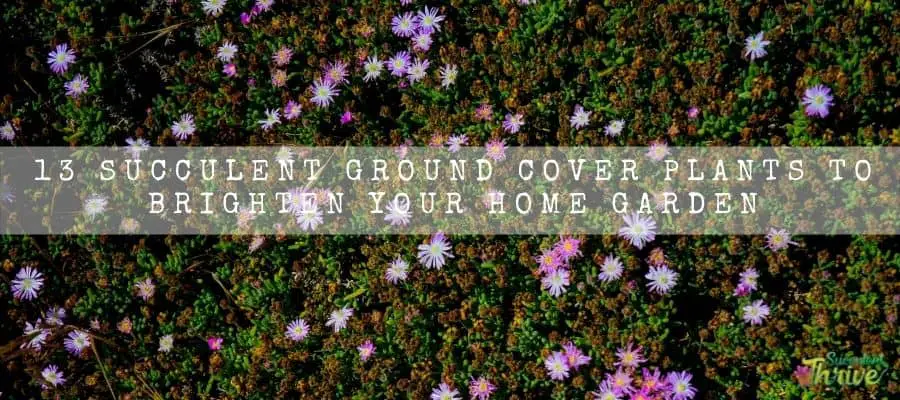
Succulent ground cover plants
There is a lot you could choose for ground covers among succulents as they have got so many varieties
As such you could select them depending on where you live and on the growing zone. Further you consider factors such as sunlight exposure, rainfall etc.
Moreover, you should consider whether it is possible to provide shelter for delicate species too.
Having said that, succulents such as creeping sedum, would be a great pick for ground covers.
Simply because they have so many species which you could choose as they have different heights and colors.
Moreover, you could choose an ice plant as a great ground cover too. It has attractive daisy-like blooms along with thick leaves.
Apart from the above, Echeveria will also be handy in using as a fantastic ground cover. When you grow the ground cover, they will provide you with a carpet of plants which resembles roses.
Hens and chicks would be another option for ground cover succulents. Ghost plants would be another great choice for ground covers.
So let’s find some popular succulent ground cover plants.
Moss Rose
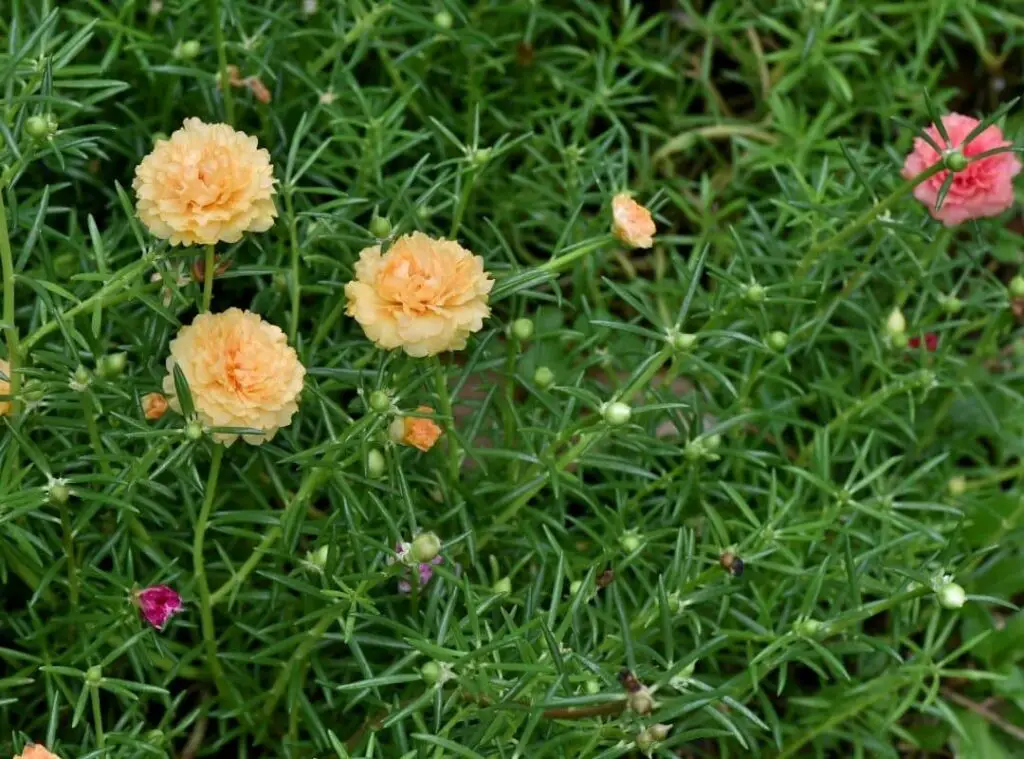
You could use Moss rose as a fantastic ground cover. They form with fascinating rosettes along with leaves in light green color.
They also carry a touch of magenta color. Their leaves will have hairs which would be little and delicate to the touch.
Those hairs form on the margins of the leaves. Leaves could be about six inches in length and about 12 inches in width once they grow to the fullest.
When it comes to light requirements, they would want bright sunlight to full sunlight. In terms of temperature, they can thrive in freezing temperatures as well.
Ghost Plant
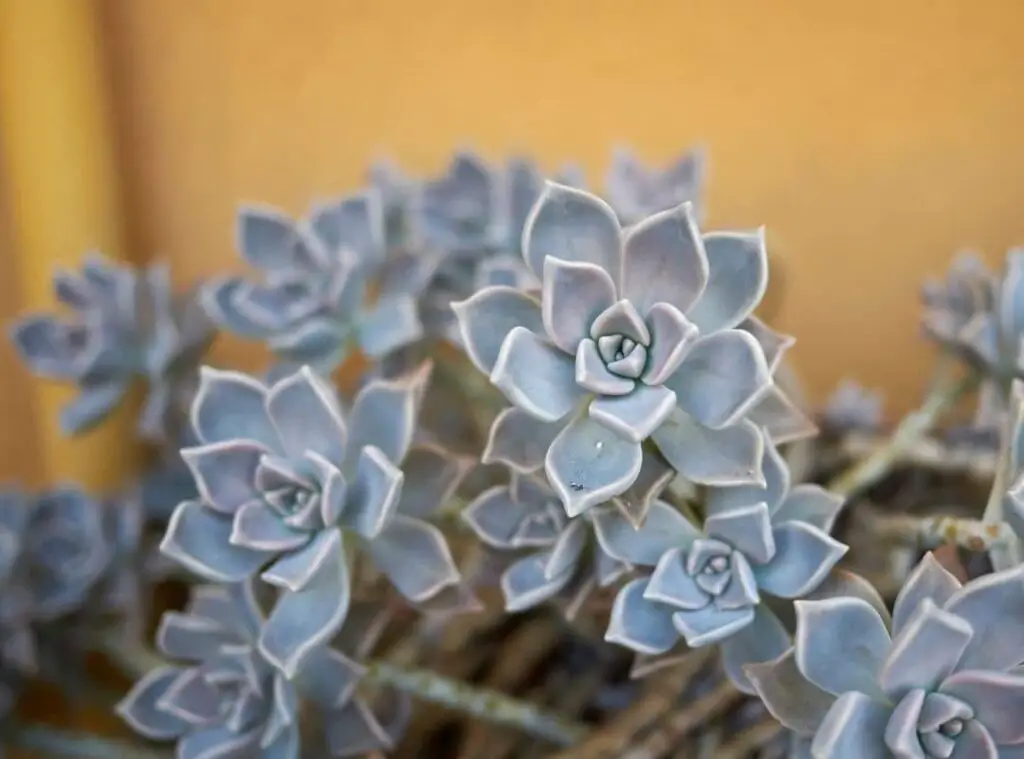
Ghost plant’s scientific name is Graptopetalum paraguayense. This kind looks like the Echeveria which form rosettes. It is an even more hardy plant
It could thrive in temperatures less than 10 degrees Fahrenheit. their height could be around six inches to one foot when they grow to their potential.
Further they form clumps which could be about 14-20 inches in width.
They have a powdery layer which is called Pruinose. The powdery layer, Pruinose will be covering the leaves and that gives a ghost like appearance to these plants.
They are so special because they could change the color. Once you provide them full sunlight, they will stay in a translucent yellow to pink color.
When you give them, partial sunlight leaves will tend to get a blue gray color tone. When you locate them in extreme hot and dry conditions, leaves could turn gray with pink touches.
They could bloom with white or yellow flowers. They will look like stars in shape. Flowering could take place in mid spring.
It is essential that you provide them with well-draining soil for them to thrive.
Blue Chalksticks
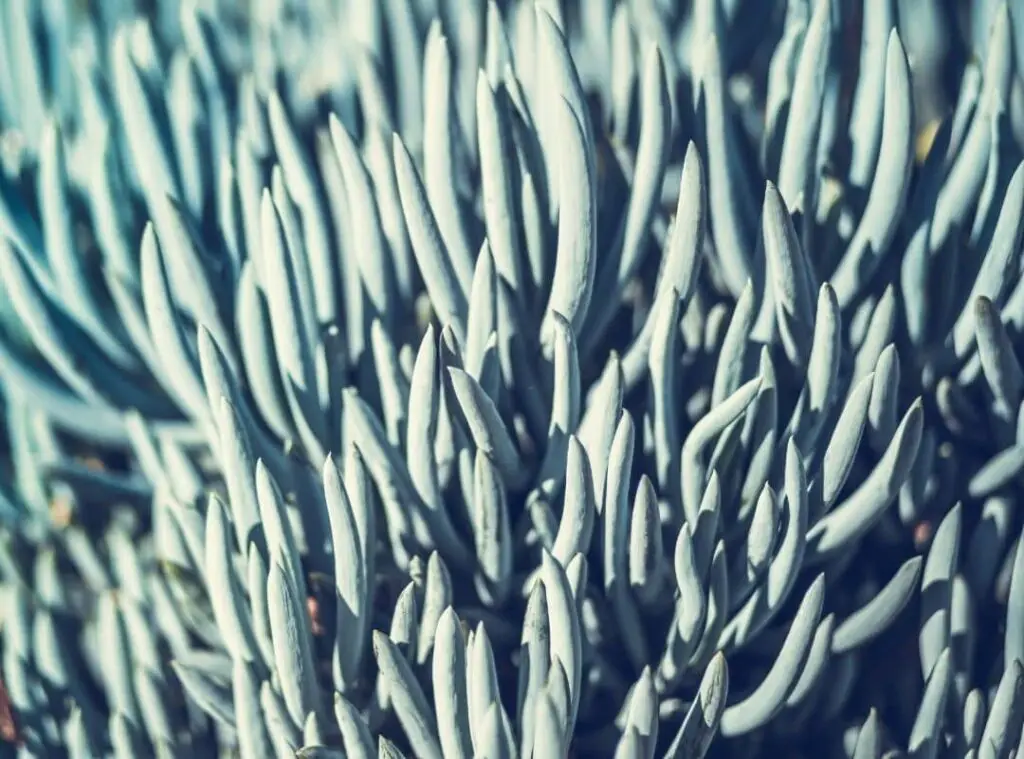
Blue Chalksticks is an endemic succulent plant in South Africa. They are low growing succulents which tend to spread out as they grow.
Their leaves would be large and silvery blue green in color. Further you could spot them in a pointed way too.
You could commonly spot these plants in USDA zones 9-11 since those people tend to grow them a lot as ground covers.
You need to take necessary steps to protect them from unhealthy extreme winter conditions. They would love to grow under full sunlight.
Caucasian Stonecrop (Sedum spurium)
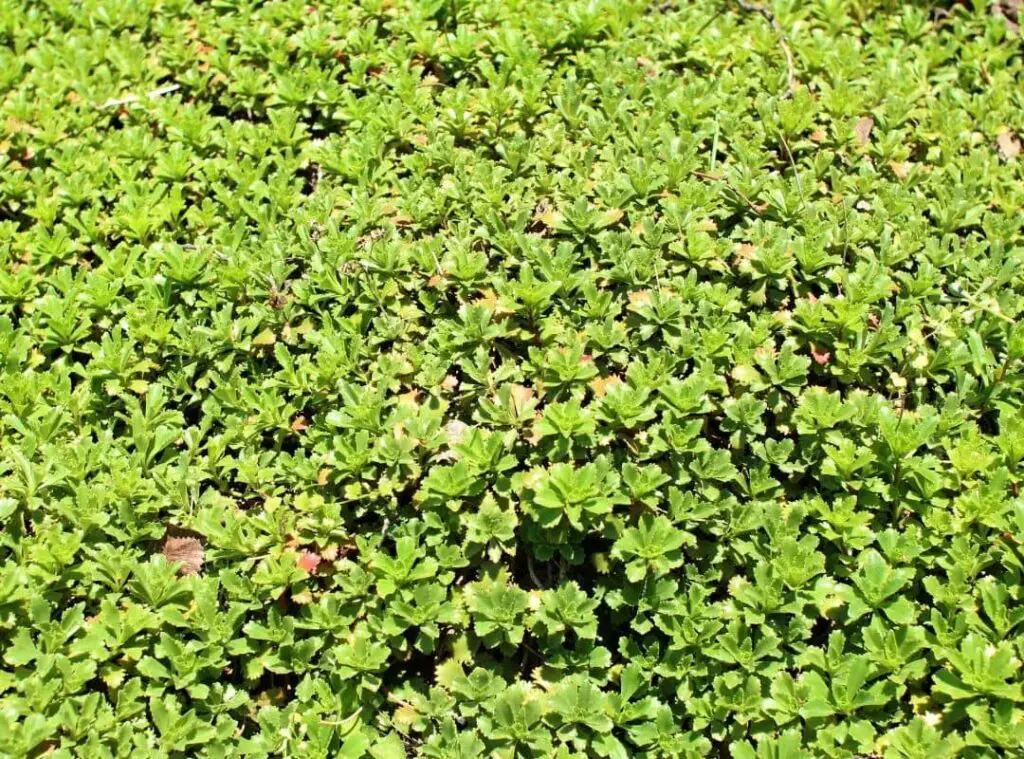
Sedum Spurium which you could commonly call as ‘Dragon’s Blood Stonecrop’, aka ‘Red Carpet’ are also quite famous succulent ground cover.
Many people tend to grow them as ground covers since they could thrive in winter conditions. This is the best Sedum plant which could thrive in the winter conditions.
They usually turn their colors from green to red purple to a deeper burgundy based on the season and on the sunlight conditions.
They bloom with bright pink, red flowers. Further they would like stars in shape. These plants would be about 3-6 inches in height once they grow to their fullest.
Echeveria

Echeverias leaves consist of a waxy cuticle on the surface. It is a slow growing succulent which could grow up to 12 inches in height and in width.
Echeverias has about 150 varieties. You have a lot to choose from in numerous colors.
An assorted variety could be a great pick for ground cover as it could diversify the color combination.
On the other hand, if you select just one plant, it could create a more cohesive low landscape. This is endemic to Texas and to Central America.
They could thrive in drought conditions and they would withstand the moisture only if they could wither in between.
Ensure that you grow them in full sunlight and in well-draining soil. It is relatively easy to grow succulent and hence why many people tend to grow them a lot.
They form offsets or pups which grow closer to the mother rosette. You should cautiously take them off, plant them again and see how beautifully they grow as ground covers.
Parry’s Agave
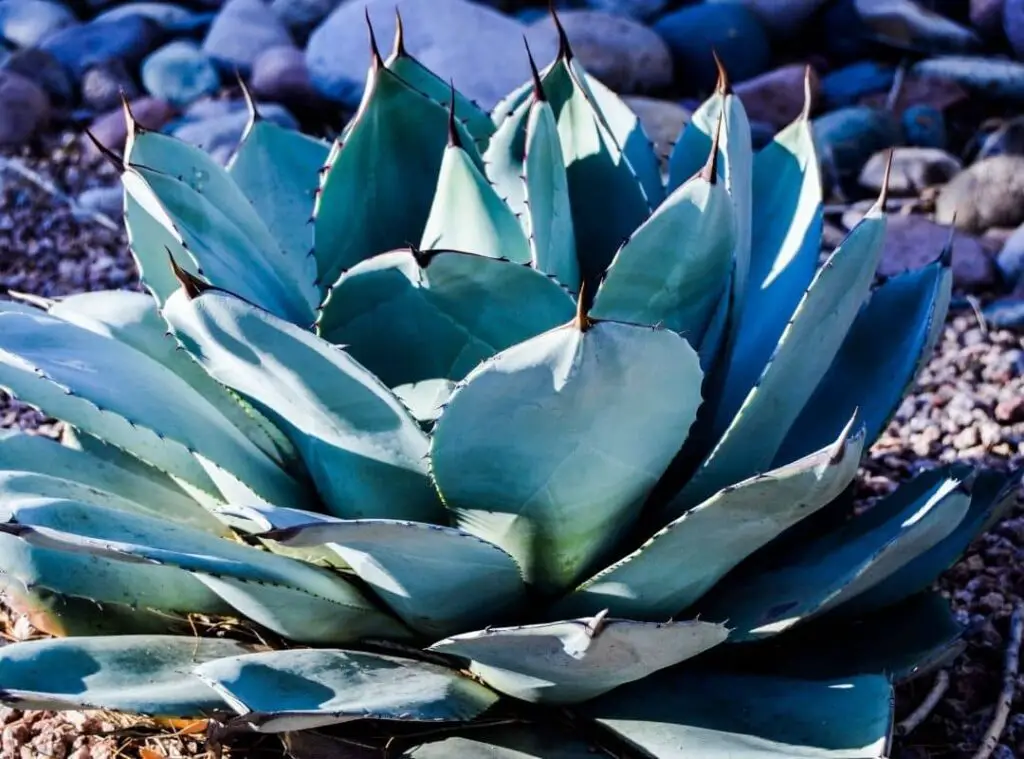
This is a tiny species of Agave which is getting popular as a ground cover. They could grow one foot to three feet in height and in width too.
They are also rosette forming succulents and it could be very beneficial to store water. Other than that, it will add so much grace for the plant too.
This is endemic to the American Southwest and to Mexico.
Ideally you should locate them on top of a white rock so that it will bring an attractive color contrast. They would love low desert climates such as full sunlight and intense heat.
There are certain types of Agaves which could be hardy to 10 degrees Fahrenheit. They would prefer to grow in USDA zones 7b-10a.
You need to provide them with well-draining sandy or rocky soil types to thrive well.
Rock Purslane (Calandrinia spectabilis)
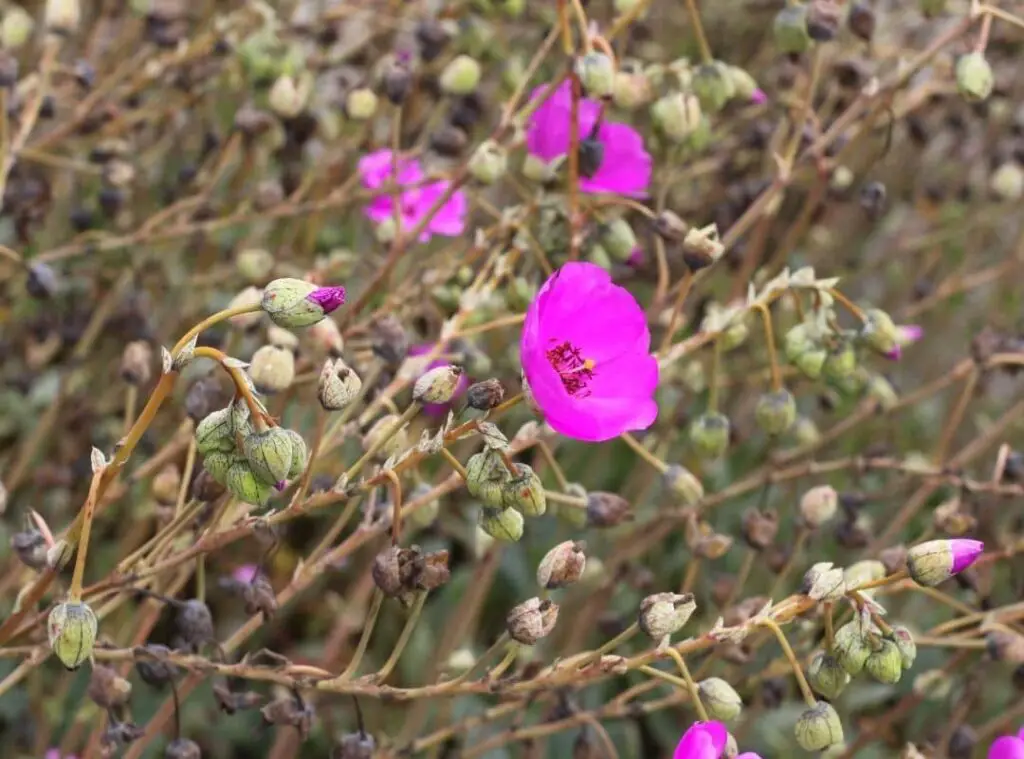
This is originating from Chile. The foliage of this plant has a tone of blue- green.
Rock Purslane succulents develop leaves in gray green colors and produce a dense mound which they make from magenta blooms in spring to fall.
Their blooms are 2 inches in width. They could only stay alive for one day only. On the next day, there will be new flowers which will replace them.
If you could pair Rock Purslane with pig’s ear, that would make a great combination. Pig’s ear form flowers in orange.
They do well in Mediterranean climate conditions. However, you could grow this as a container plant also.
Their water requirement is low and would love to have full sunlight to partial sunlight. Plant would be 1 foot in height and 3 feet in width.
Upright Myrtle Spurge (Euphorbia rigida)
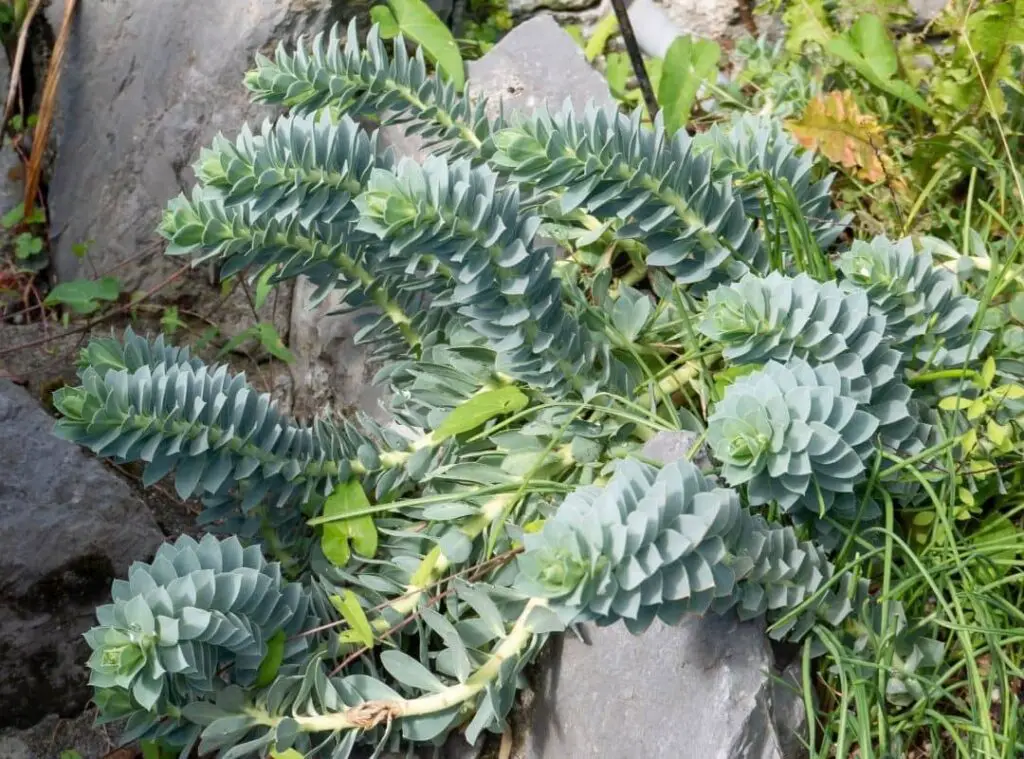
Upright Myrtle Spurge’s scientific name is Euphorbia rigida. This is originating from Mediterranean islands. Silver Spurge is another common name which you could use to call these plants.
This is an evergreen perennial succulent type. Their leaves form in a spiral way around the stem. They are blue and gray in color.
When they are exposed to colder weather conditions, foliage of the plant could turn brown, red at the margins.
Moreover, they produce attractive flowers in pale green to yellow. You could spot them forming at the top of the leaves.
They could grow to one to two feet high and tend to look like shrub types. They require bright sunlight to full sunlight. Their preferred USDA zones would be 7-10.
Resin Spurge (Euphorbia resinifera)
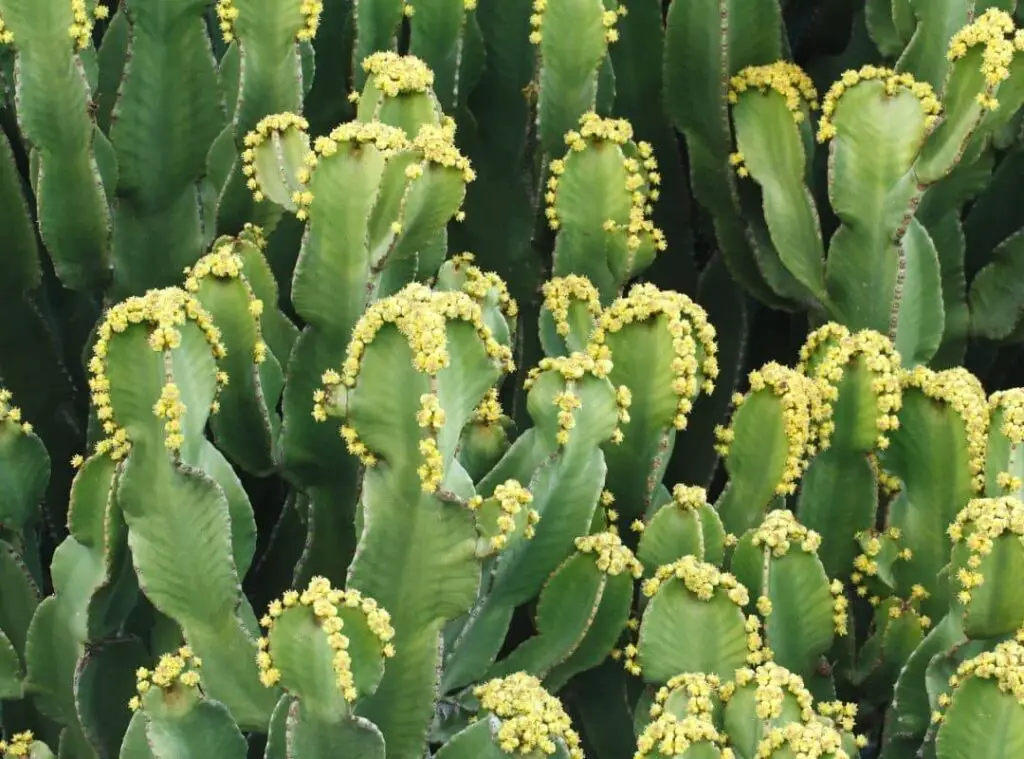
Euphorbia resinifera is the scientific name of Resin Spurge. They are originally from Morocco. Their mature size would be 2-3 feet high and 3-5 feet wide.
Their stems would look like squares and they would be light green in color. They tend to organize in clumps. Hence that makes them look like the African native cactus.
Furthermore, brown spines cover the sides of the stems. When they get older, they could grow larger.
You could plant the little ones, next to boulders and next to perennial plants like desert marigold (Baileya multiradiata) and blackfoot daisy (Melampodium leucanthum).
Beware when you are handling this plant as its milky sap is toxic.
Their water requirement is also low and would love to thrive well in full sunlight to partial sunlight.
Candelilla (Euphorbia antisyphilitica)
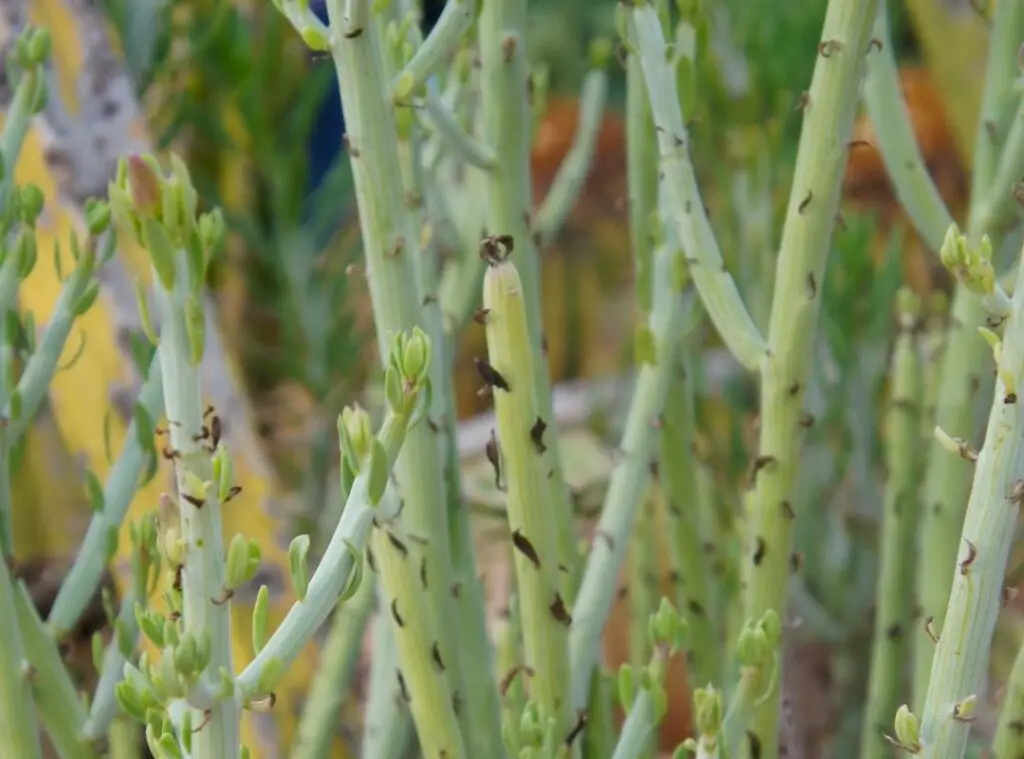
These are native plants in New Mexico, Southwestern Texas and in Mexico. They tend to grow upright. As such they add a diverse dimension to the landscape.
Further they tend to produce the new stems along the outer part of the plant. Moreover, they could increase their width whilst growing upright.
They produce flowers in pale pink colors. They are little and usually on the upper part of the stem during spring season.
They form little leaves, and they will shed them soon. You could grow Candelilla in staggered rows along with this, so that it will be a treat to watch them as they grow.
Their water requirement is relatively low and would thrive in full sunlight to reflected sunlight. They would be 1 foot – 2 feet high and 2-3 feet in width.
Royal Dewflower (Drosanthemum speciosum)
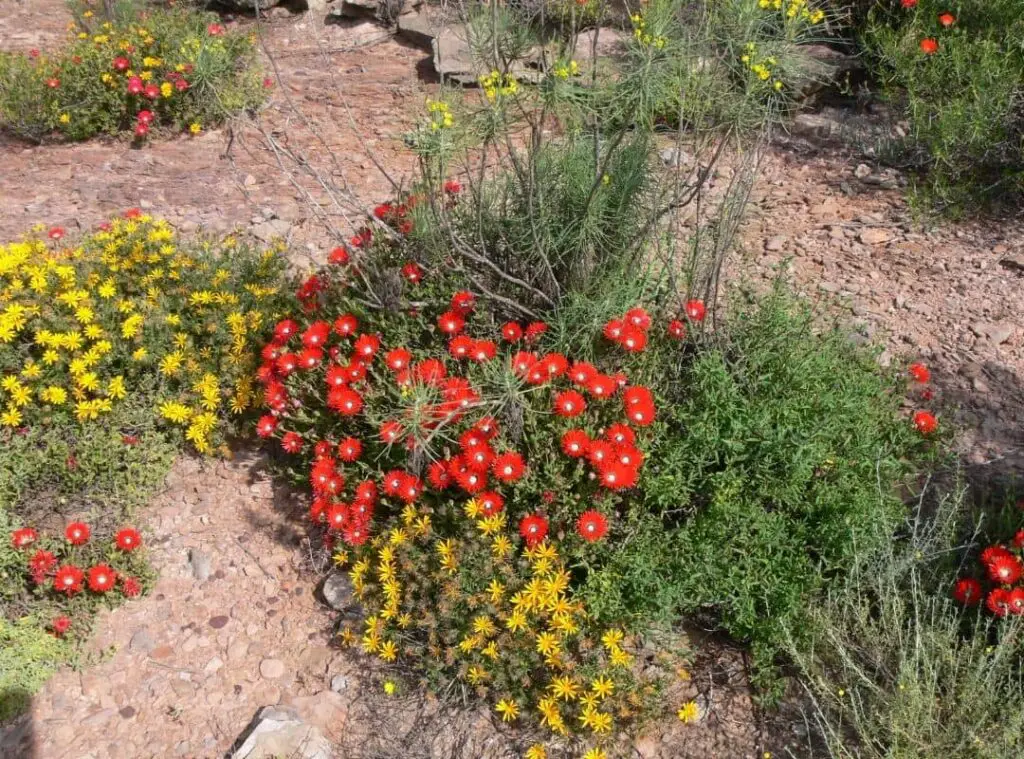
Drosanthemum speciosum is the scientific name of Royal Dewflower. They hail from South Africa and their mature size would be 6-12 inches in height and 3 feet in width.
They produce attractive flowers with a touch of pink, purple and in red which will vary on the variety of them. During spring and in summer, they could make a colorful ground cover.
When they are not in the flowering season, their thin gray green leaves add a visually appealing vibe to the garden. when they contact the soil, they start to root.
Once they grow it could be so tempting for you to walk on those. However, you should avoid doing that unless it will be unhealthy for them.
Their requirement in water is low and they would survive in full sunlight to partial shade.
Blue Spruce (Sedum Reflexum)
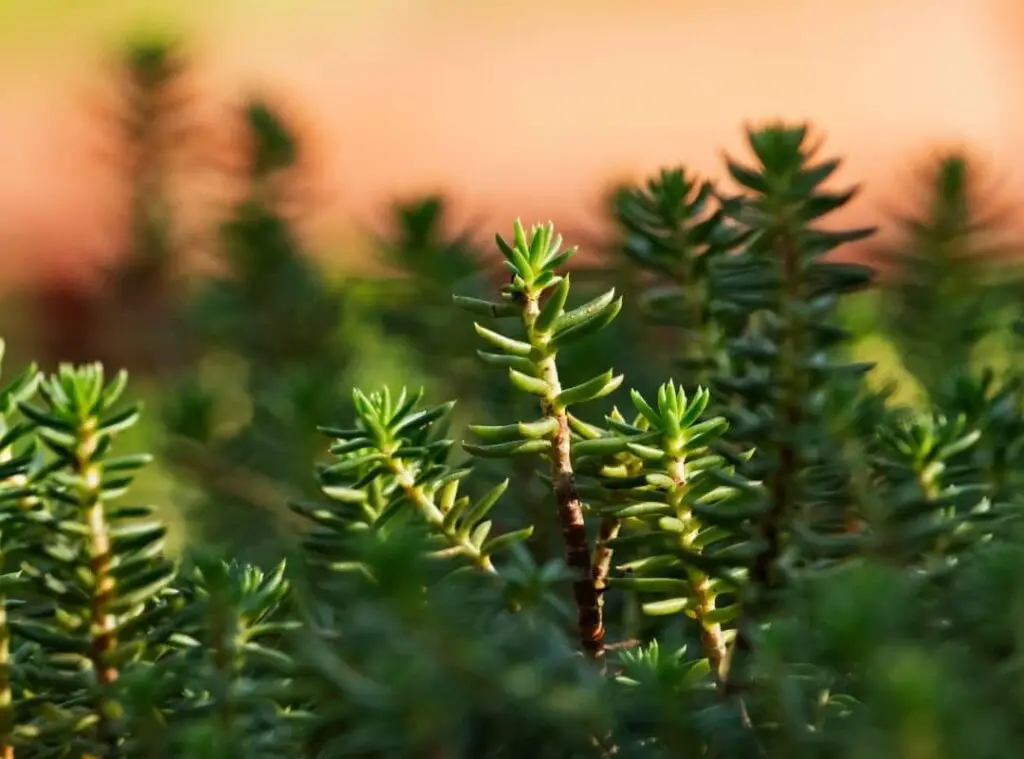
Blue Spruce’s scientific name is Sedum Reflexum. Further you could call them as Blue Stonecrop, Blue Spruce, Jenny’s stonecrop etc.
Usually, you could spot their foliage in blue green. During winter times and in full sunlight, they could turn light green to yellow with pink touch.
These are low growing succulents in general and they could rise to 3-5 inches in height. These are special, as these Sedums could also thrive in freezing temperatures and in snow.
Hence why, they are a fantastic pick for ground cover.
Tokyo Sun (Sedum Japonicum)
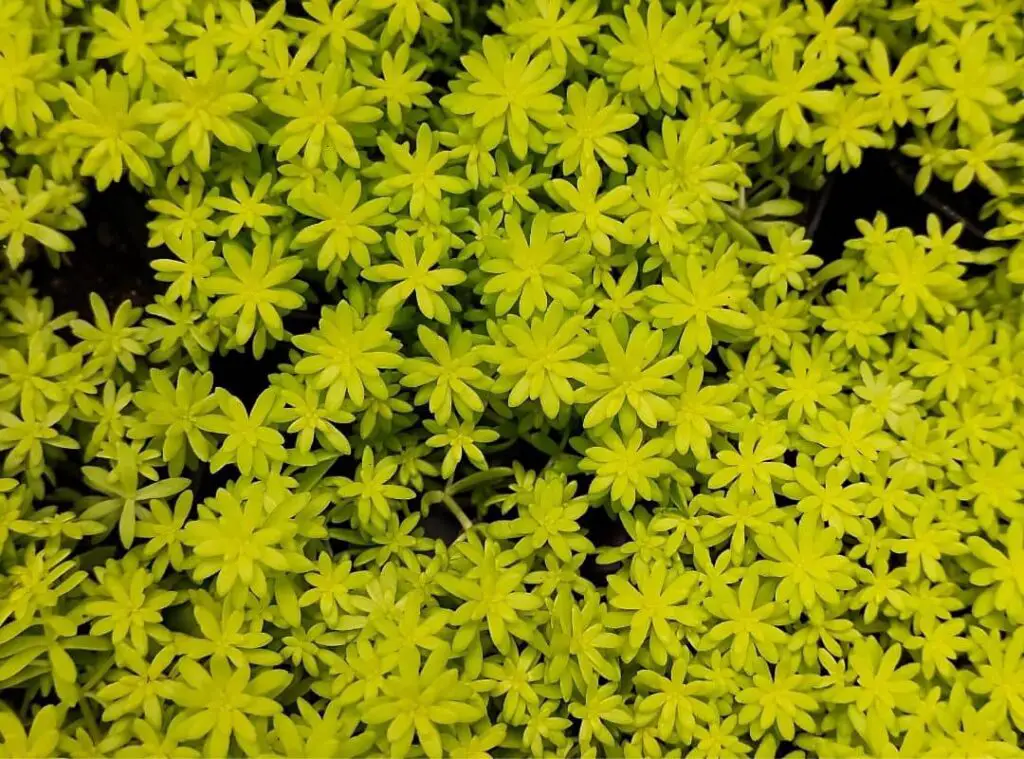
Sedum Japonicum is the scientific name of Tokyo Sun. They are low growing and could easily care for them.
their foliage would be bright yellow in color. When you provide shade, they turn to lime green. Their height will be around 3 inches. When they grow, they usually tend to expand outwards.
No matter where you locate them, they will add so much color there. However, they are not cold hardy compared to the rest of the Sedums.
They could withstand a mild frost condition. However, we need to take necessary actions to safeguard it from intense winter conditions.
How to plant succulent ground cover
First, you need to observe the drainage before you proceed with planting any succulents.
To check this, you could dig a trench about 8 inches deep. Next you may fill it with water.
After half an hours’ time, if you realize the water is remaining there and if it has not drained, you may decide that the soil which is available there is heavy and not appropriate to grow succulents.
However, you could be a little tactful here in amending the soil type there by adding some sand or gravel to the top layer of the soil a few inches deep.
That will make the draining faster and efficient. Succulents in general do not comprise deep root systems. As such it will be satisfactory for them to make the draining faster.
Refrain in utilizing organic mulch around the plants. it could stimulate the fungal attractions and pests’ infections as well as they could retain too much moisture.
Alternatively, you could utilize inorganic mulches such as pea gravel or stones. You should water them lightly until the plant settles in.
After several months, you may water them regularly once the soil is dry.
How to care succulent ground cover
Watering
You need to adjust on watering frequency and on the amount of water depending on the variety of the succulents you have planted.
Further you should consider other factors such as sunlight exposure, temperature level, and the soil type.
General practice is to water the succulents 8 inches deep and after that you may leave them to wither before proceeding with another watering session.
During springtime, succulents require more water as that is their actively growing season.
On the other hand, you need to cut down on watering in winter as many of them go dormant during the winter season.
Lighting condition
There could be certain succulents such as Sedum which survive in different light conditions; however, they would prefer bright sunlight.
When you acclimate them to full sun, they can survive in those conditions. Having said that there could be some which could withstand the frost conditions too.
When you are going to make a ground cover, you need to ensure that you choose the succulents which could survive in the lighting conditions available there.
Soil type
However, you could be a little tactful here in amending the soil type there by adding some sand or gravel to the top layer of the soil a few inches deep.
That will make the draining faster and efficient. Succulents in general do not comprise deep root systems. As such it will be satisfactory for them to make the draining faster.
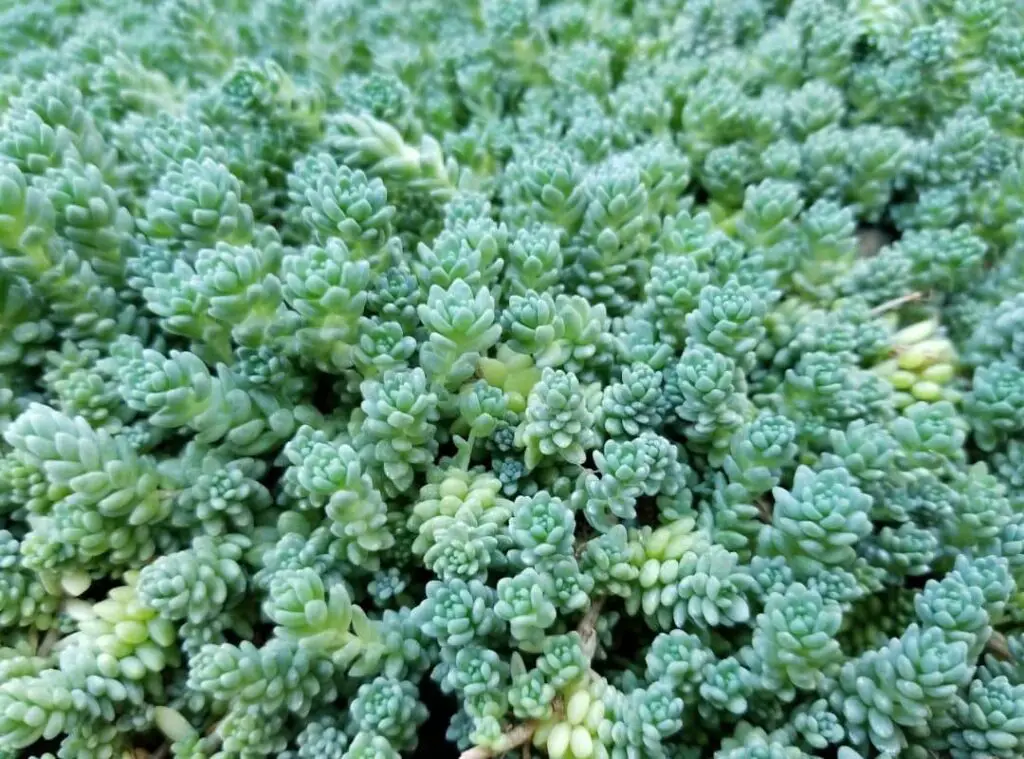
Perennial succulent ground covers
Sedums could be a great example for perennial succulent ground covers. They stay evergreen year round and tend to grow slowly.
That is what makes them great ground covers. When they grow, they sprawl and expand in a vertical way. They require a low maintenance from you, and you need to provide them only a little care for them.
They could also survive in numerous lighting conditions. However, they would love the most to grow under very bright sunlight.
When you acclimate them, they can survive in full sunlight. Furthermore, they are tolerant of heat too.
On the other hand, there could be some succulents, which can withstand the mild frost situations as well.
Find below some of the perennial succulent ground cover plants.
- Sedums.
- Sedum Spurium ‘Dragon’s Blood Stonecrop’
- Sedum Reflexum ‘Blue Spruce or Blue Stonecrop’
- Sedum Japonicum ‘Tokyo Sun’
- Sempervivums.
- Sempervivum Arachnoideum ‘Cobweb Hens and Chicks’
- Sempervivum ‘Moss Rose’
- Sempervivum Calcareum ‘Fire Dragon
What are the fastest growing succulent ground covers?
Dragon’s blood stonecrop is a succulent which usually grows rapidly. We could use it as a great ground covering succulent on bare ground.
You could call this evergreen perennial plant a red carpet in common. They do not tend to grow tall.
They have thick chubby leaves which are round. Leaves develop a rosette pattern in green and in burgundy.
Related question
What is the succulent ground cover with yellow flowers?
Upright Myrtle is the best example which you could spot the flowers on a ground cover succulent. They form green-yellow blooms above the leaves during spring and summer.
What is the succulent ground cover with purple flowers?
Bugleweed is a fantastic evergreen succulent which forms purple flowers. They form spikes of blue, lavender or purple flowers.
You could call them carpet bugle in common. They would love to have either full shade or full sunlight.
Can we use succulent ground cover for shade?
It is somewhat difficult to use succulent ground covers for shade.
Read Next: How Often To Water Succulents? | Everything You Need To Know |
